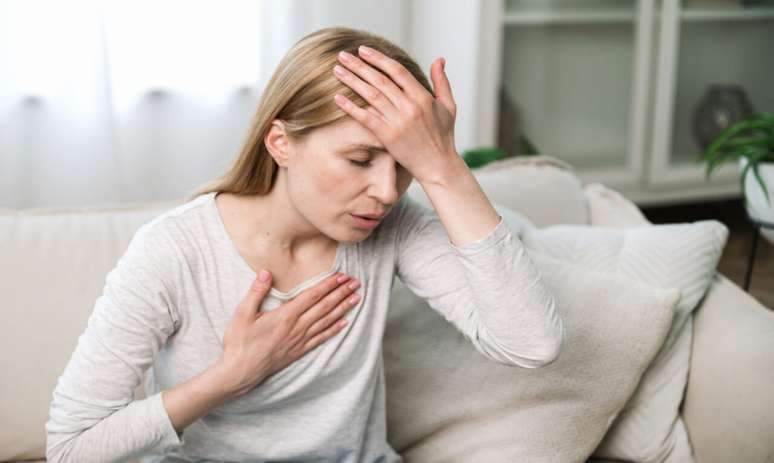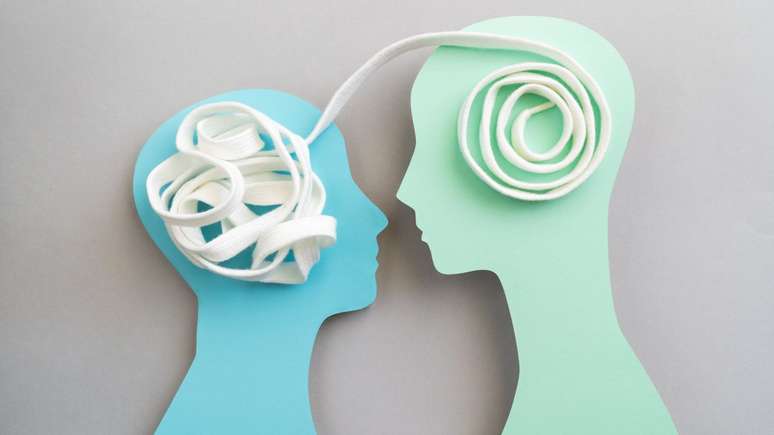An anxiety crisis occurs when the individual reaches a peak of emotional imbalance. If frequent, it may indicate a disorder
Anxiety is a very common problem among Brazilians. According to the World Health Organization (WHO), 9.3% of the national population suffers from this pathology, which places us at the top of the ranking of the most anxious countries in the world. It is worth highlighting that the condition is among the reasons for suicide, which places the disease at the center of prevention during this period. Yellow September.
html[data-range=”xlarge”] figure image img.img-ff513757000933877e410581c1b107f9qo67tluw { width: 774px; height: 463px; }HTML[data-range=”large”] figure image img.img-ff513757000933877e410581c1b107f9qo67tluw { width: 548px; height: 328px; }HTML[data-range=”small”] figure image img.img-ff513757000933877e410581c1b107f9qo67tluw, html[data-range=”medium”] figure image img.img-ff513757000933877e410581c1b107f9qo67tluw { width: 564px; height: 337px; }HTML[data-range=”small”] .article__image-embed, html[data-range=”medium”] .article__image-embed {width: 564px; margin: 0 automatic 30px; }
“Generalized anxiety disorder, panic disorder, and post-traumatic stress disorder can lead to constant worry, intense fears, and extreme anxiety reactions. If left untreated, these disorders can increase the risk of suicidal behavior,” warns Dr. Julia Trindade, psychiatrist with a postgraduate degree in behavioral neuroscience and member of the Brazilian Psychiatric Association (ABP).
In moments of greater intensity the individual may experience anxiety attacks, increasing the potential risks of the disorder. Psychologist Luana Ganzert, emotion expert and author of the book “Do you live or survive?”, identifies the main signs of an anxiety crisis. I wait:
Signs of an anxiety attack
- Intense feeling of fear or panic;
- Fast heartbeat or palpitations;
- Rapid breathing or difficulty breathing;
- Tremors or feeling of weakness in the legs;
- Excessive sweating;
- Dizziness or feeling faint;
- Feeling of suffocation or tightness in the chest;
- Nausea or abdominal discomfort;
- Feeling of unreality or disconnection from reality (depersonalization);
- Fear of losing control or going crazy.
“It is important to note that these symptoms may vary from person to person. If you or someone you know experiences these symptoms in a severe and recurring way, it is essential to seek medical or psychological help. A healthcare professional can make an appropriate diagnosis and suggest treatment options , which may include cognitive-behavioral therapy, medications or other therapeutic approaches”, underlines the specialist.
When the problem becomes annoying
According to Luana, when seizures become recurrent, this may indicate the presence of an anxiety disorder. “Anxiety disorders are mental conditions characterized by excessive worries and fears, disproportionate to real situations and which persist over time,” she explains.
There are different types of anxiety disorders, such as Generalized Anxiety Disorder (GAD), which involves constant and excessive worries about various areas of life, such as health, money, work, among others.
“When these episodes of anxiety recur and significantly interfere with daily life, it is important to seek help from a mental health professional. This is because appropriate treatment, which may include therapy, medication, or a combination of both, can help manage symptoms and improve the quality of life of those suffering from anxiety disorders,” says the psychologist.
Symptoms of anxiety disorder
Luana points out that signs of anxiety can vary from person to person. But they often include a combination of physical, emotional and behavioral symptoms. The professional highlights the most common ones:
Physical symptoms: rapid heartbeat or palpitations; rapid breathing or shortness of breath; muscle tension; tremors; excessive sweating; nausea or abdominal discomfort; dizziness; insomnia; among others.
Emotional symptoms: excessive worry or negative thoughts; feeling of fear or panic, restlessness; irritability; difficulty concentrating; feeling of constant apprehension.
Behavioral signs: avoiding situations that trigger anxiety; relief-seeking behaviors, such as biting your nails or shaking your legs; social isolation; procrastinating on homework due to worry.
How to deal with anxiety
The psychologist highlights the main ways to treat anxiety disorder, as it involves a multifaceted approach. Watch:
- Consult a mental health professional: The first step is to seek help from a therapist, psychologist or psychiatrist for a correct diagnosis and personalized treatment.
- Seeking therapy: Cognitive behavioral therapy (CBT) is often used to treat anxiety. It helps you identify negative thoughts and develop strategies to deal with them.
- Seek medical help from a psychiatrist: In some cases, the use of prescription drugs may be necessary to control severe anxiety symptoms.
- Practice self-care: Practicing relaxation techniques such as meditation, yoga and breathing exercises can help reduce anxiety.
- Build a healthy lifestyle: Maintaining a balanced diet, exercising regularly and ensuring adequate sleep help manage anxiety.
- Connect with a support network: Sharing your feelings with trusted friends and family can provide emotional support.
- Avoid stressors: It is helpful to identify and avoid situations that trigger anxiety whenever possible.
- Gain knowledge about anxiety: Educating yourself about anxiety and its symptoms can help you better understand what’s going on and how to deal with it.
“It is important to remember that each person is unique and the treatment of anxiety must be tailored to their individual needs. Working together with a mental health professional is the key to effectively managing this disorder,” emphasizes the expert.
Source: Terra
Ben Stock is a lifestyle journalist and author at Gossipify. He writes about topics such as health, wellness, travel, food and home decor. He provides practical advice and inspiration to improve well-being, keeps readers up to date with latest lifestyle news and trends, known for his engaging writing style, in-depth analysis and unique perspectives.







![A Better Life Preview: What’s in store for Friday, October 24, 2025 Episode 449 [SPOILERS] A Better Life Preview: What’s in store for Friday, October 24, 2025 Episode 449 [SPOILERS]](https://fr.web.img6.acsta.net/img/16/27/1627e795b389773da60b2ef0a5dfdfd0.jpg)
